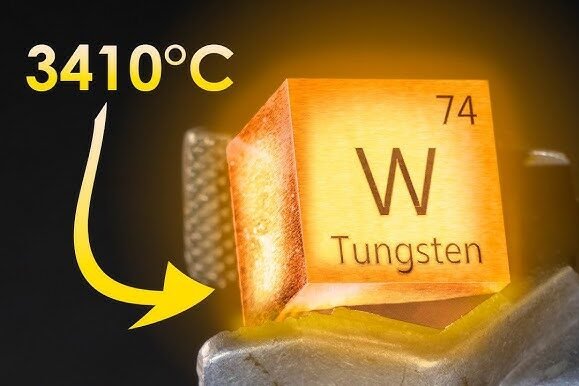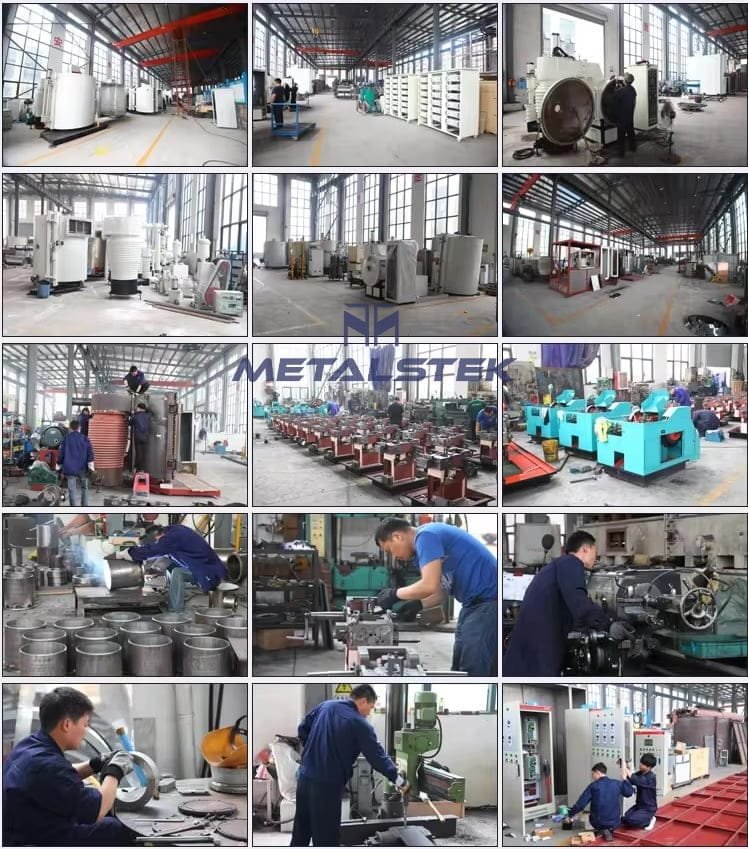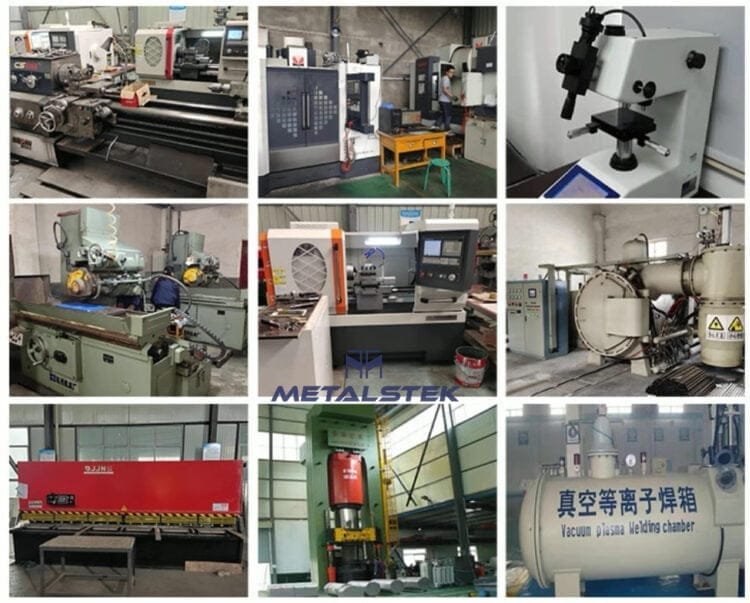Menu
Refractory Metals have an exceptionally high melting point, typically above 4,000 °F (2,200 °C). These include core elements such as niobium, molybdenum, tantalum, tungsten, and rhenium. However, a broader definition includes additional metals with melting points surpassing 2,123 K (1,850 °C), such as titanium, vanadium, chromium, zirconium, hafnium, ruthenium, rhodium, osmium, and iridium.
MetalsTek Engineering has operated in the refractory metal industry for over a decade. We provide a range of high-quality refractory metal materials at affordable prices.

Refractory Metals and their alloy compounds are known for their excellent heat resistance and high melting points, usually exceeding 2,000°C. These metals can retain their strength and structural integrity even in extremely high temperatures, making them ideal for applications in industries requiring such properties. Refractory metals play a crucial role in industries that demand materials capable of withstanding extreme conditions. Their unique properties enable them to remain structurally sound and resist deformation or degradation when exposed to high temperatures. They are essential in specialized applications, including aerospace, defense, electronics, and high-temperature manufacturing.
| Name | Niobium | Molybdenum | Tantalum | Tungsten | Rhenium |
|---|---|---|---|---|---|
| Period | 5 | 5 | 6 | 6 | 6 |
| Group | 5 | 6 | 5 | 6 | 7 |
| Melting Point °C | 2477 | 2623 | 3017 | 3422 | 3186 |
| Boiling Point °C | 4744 | 4639 | 5458 | 5930 | 5596 |
| Melting Point K | 2750 | 2896 | 3290 | 3695 | 3459 |
| Boiling Point K | 5017 | 4912 | 5731 | 6203 | 5869 |
| Density g/cm3 | 8.57 | 10.28 | 16.69 | 19.25 | 21.02 |
| Young's Modulus GPa | 105 | 329 | 186 | 411 | 463 |
| Vickers Hardness MPa | 1320 | 1530 | 873 | 3430 | 2450 |
MetalsTek Engineering is a global company specializing in research, development, manufacturing, and sales of advanced materials. We supply high-purity refractory materials to research institutions and high-tech companies worldwide. We have a strong presence in the market for powders, alloys, bars, boats, crucibles, electrodes, plates, rods, sheets, tubes, wires, and sputtering targets. For the past decade, customers worldwide have relied on MetalsTek to help them reduce costs, improve quality, and shorten lead times, giving them a competitive edge.


In today’s fast-paced world of technology and industry, materials like chromium and chromium-based sputtering targets play a crucial role. These materials are essential for thin film deposition processes, which have transformed industries like electronics and aerospace. But what are sputtering targets, and why is chromium so important for these advanced applications?

Refractory metals are defined by their extraordinarily high melting points and exceptional resistance to heat, wear, and corrosion. A metal typically falls into this category if it can withstand temperatures above 2000°C.
Refractory metals are distinguished by their exceptional properties that make them indispensable in high-tech and industrial applications where extreme conditions are common. Here are the key defining properties of refractory metals:
These properties make refractory metals uniquely suited for advanced applications in aerospace, electronics, medical devices, and other fields that require materials capable of performing under extreme conditions.
Examples of refractory metals and their melting and boiling points:
These metals are often used in pure form or alloyed with other metals to enhance their properties.

Out of the pure refractory metals, there are also many models of refractory alloys, including some high-entropy alloys (HEAs), which include:
These refractory metal alloys are valued for their ability to maintain strength, hardness, and corrosion resistance even at extremely high temperatures, making them essential for a wide range of industrial and technological applications.

The key takeaway is that refractory materials are critical for enabling and improving the performance of diverse high-temperature industrial processes and equipment across numerous sectors of the economy. For example, in aerospace, they are used in rocket engine nozzles, which must resist extreme heat during launches. The electronics industry relies on these metals for components like capacitors and semiconductor gates, where high temperature resistance is crucial. In the medical field, devices made from refractory metals are valued for their robustness and resistance to corrosion.
Here are the key applications of refractory materials across various industries:
Steel and Iron Industry:
Refractory materials are used to line furnaces, kilns, reactors, and other vessels that hold and transport hot media like molten metal and slag. They protect the steel casings of these vessels and enable high-temperature steel production processes. Refractory materials made of zirconia, alumina, silica, and magnesia are essential for preventing molten metal oxidation and slag formation, supporting energy-saving and cost-effective steel production.
Glass, Cement, and Ceramics Industries:
Refractory materials are used to line the furnaces, kilns, and other high-temperature equipment utilized in glass, cement, and ceramic production.
Petrochemical and Energy Industries:
Refractory materials are used to line fired heaters, hydrogen reformers, cracking furnaces, utility boilers, and sulfur furnaces in these industries.
Machinery and Military Industries:
Refractory materials are used to line missile components like pneumatic valves and thrust directional valves, enabling them to withstand high temperatures and harsh environments. They are also used in rocket nozzles that must operate at ultra-high temperatures.
Other Industries:
Refractory materials are used to line furnaces and reactors in non-ferrous metal, light industry, and electric power generation applications, serving as an essential basic material across a wide range of high-temperature industrial processes and technologies.
The refractory metals possess a remarkable combination of properties that make them indispensable in a wide range of industries.
Advantages of Refractory Metals:
Disadvantages of Refractory Metals:
The key factors that influence the creep behavior of refractory metals and their alloys are:
For some refractory metal alloys, higher residual monomer content can act as a plasticizer, increasing creep deformation.
The key challenges in working with refractory metals without directly quoting any numerical values:
High Melting Points
Refractory metals have exceptionally high melting points, which requires specialized manufacturing processes like powder metallurgy, as they cannot be easily fabricated using traditional casting methods. The high temperatures needed for processing can also lead to extensive cracking in the final parts.
Brittleness
Refractory metals can be prone to cracking and deformation due to their inherent brittleness. This characteristic makes them challenging to work with and shape into complex geometries using traditional manufacturing techniques.
Oxidation and Corrosion
Refractory metals are susceptible to surface oxidation and corrosion when exposed to high temperatures and harsh environments. This can compromise the structural integrity and lifespan of components made from these materials.
Specialized Coating Requirements
Applying protective coatings to refractory metals is a highly specialized process that requires expertise to ensure compatibility and effectiveness. The choice of coating material depends on factors like temperature, atmosphere, and the specific refractory metal being used.
Difficulty in Preparation and Fabrication
Refractory metals exhibit low grinding and polishing rates and are easily deformed or smeared during preparation. Their unique properties make them challenging to process and fabricate into the desired shapes and components.
The key takeaway is that while refractory metals offer exceptional properties for high-temperature and extreme environment applications, their inherent challenges require specialized manufacturing techniques and expertise to overcome, making them more difficult to work with compared to more common metals.
The future of refractory metals looks promising, with ongoing research focused on improving their properties and reducing costs. Innovations in alloy composition and new manufacturing techniques are expected to expand their applications, particularly in emerging technologies where durability and resistance to extreme conditions are required.
Refractory metals are more than just materials; they are enablers of modern technology. Their ability to perform under the most demanding conditions makes them invaluable in advancing not only current applications but also in pioneering new frontiers in material science. As we continue to push the boundaries of what’s possible, the role of refractory metals will only grow more significant, making them a key component in the evolution of technology across industries.
At MetalsTek, we take great pride in providing top-notch customized refractory materials that meet the demanding requirements of today’s industries. Our dedication to quality, coupled with our capability to tailor targets to precise sizes and compositions, positions us as the go-to choice for businesses looking to push boundaries and achieve greatness.
Do you want to improve your products with high-quality refractory materials? Contact MetalsTek today. Let’s talk about how we can meet your needs and help you move your technology forward.